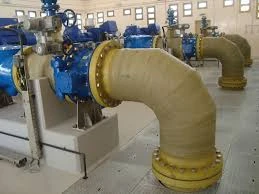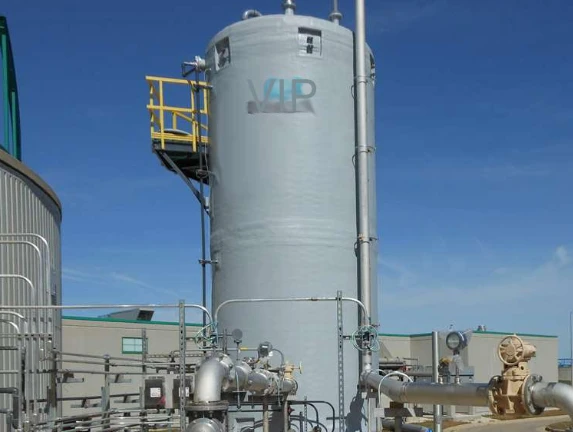
-
 Afrikaans
Afrikaans -
 Albanian
Albanian -
 Amharic
Amharic -
 Arabic
Arabic -
 Armenian
Armenian -
 Azerbaijani
Azerbaijani -
 Basque
Basque -
 Belarusian
Belarusian -
 Bengali
Bengali -
 Bosnian
Bosnian -
 Bulgarian
Bulgarian -
 Catalan
Catalan -
 Cebuano
Cebuano -
 China
China -
 China (Taiwan)
China (Taiwan) -
 Corsican
Corsican -
 Croatian
Croatian -
 Czech
Czech -
 Danish
Danish -
 Dutch
Dutch -
 English
English -
 Esperanto
Esperanto -
 Estonian
Estonian -
 Finnish
Finnish -
 French
French -
 Frisian
Frisian -
 Galician
Galician -
 Georgian
Georgian -
 German
German -
 Greek
Greek -
 Gujarati
Gujarati -
 Haitian Creole
Haitian Creole -
 hausa
hausa -
 hawaiian
hawaiian -
 Hebrew
Hebrew -
 Hindi
Hindi -
 Miao
Miao -
 Hungarian
Hungarian -
 Icelandic
Icelandic -
 igbo
igbo -
 Indonesian
Indonesian -
 irish
irish -
 Italian
Italian -
 Japanese
Japanese -
 Javanese
Javanese -
 Kannada
Kannada -
 kazakh
kazakh -
 Khmer
Khmer -
 Rwandese
Rwandese -
 Korean
Korean -
 Kurdish
Kurdish -
 Kyrgyz
Kyrgyz -
 Lao
Lao -
 Latin
Latin -
 Latvian
Latvian -
 Lithuanian
Lithuanian -
 Luxembourgish
Luxembourgish -
 Macedonian
Macedonian -
 Malgashi
Malgashi -
 Malay
Malay -
 Malayalam
Malayalam -
 Maltese
Maltese -
 Maori
Maori -
 Marathi
Marathi -
 Mongolian
Mongolian -
 Myanmar
Myanmar -
 Nepali
Nepali -
 Norwegian
Norwegian -
 Norwegian
Norwegian -
 Occitan
Occitan -
 Pashto
Pashto -
 Persian
Persian -
 Polish
Polish -
 Portuguese
Portuguese -
 Punjabi
Punjabi -
 Romanian
Romanian -
 Russian
Russian -
 Samoan
Samoan -
 Scottish Gaelic
Scottish Gaelic -
 Serbian
Serbian -
 Sesotho
Sesotho -
 Shona
Shona -
 Sindhi
Sindhi -
 Sinhala
Sinhala -
 Slovak
Slovak -
 Slovenian
Slovenian -
 Somali
Somali -
 Spanish
Spanish -
 Sundanese
Sundanese -
 Swahili
Swahili -
 Swedish
Swedish -
 Tagalog
Tagalog -
 Tajik
Tajik -
 Tamil
Tamil -
 Tatar
Tatar -
 Telugu
Telugu -
 Thai
Thai -
 Turkish
Turkish -
 Turkmen
Turkmen -
 Ukrainian
Ukrainian -
 Urdu
Urdu -
 Uighur
Uighur -
 Uzbek
Uzbek -
 Vietnamese
Vietnamese -
 Welsh
Welsh -
 Bantu
Bantu -
 Yiddish
Yiddish -
 Yoruba
Yoruba -
 Zulu
Zulu
GRP Stair Treads Slip-Resistant, Durable FRP/Fiberglass Steps
- Understanding GRP/FRP Stair Treads: Materials and Key Features
- Technical Advantages Over Traditional Stair Solutions
- Performance Metrics: Load Capacity and Durability Data
- Manufacturer Comparison: GRP vs. FRP vs. Fiberglass Treads
- Custom Design Solutions for Specific Environments
- Real-World Applications Across Industries
- Why GRP Stair Treads Dominate Modern Construction

(grp stair tread)
Understanding GRP Stair Treads and Their Composite Relatives
Glass-reinforced plastic (GRP) stair treads, alongside their FRP and fiberglass counterparts, represent a paradigm shift in industrial safety solutions. These composite materials combine polymer resins with reinforced fibers, creating products with tensile strengths ranging from 25,000 to 45,000 psi. Unlike traditional steel alternatives, GRP variants demonstrate near-zero thermal conductivity (0.04 W/m·K) while maintaining 1/4th the weight of equivalent steel structures.
Technical Superiority in Hazardous Environments
Third-party testing reveals GRP treads maintain structural integrity at temperatures from -60°C to +120°C, outperforming aluminum's -20°C to +80°C operational range. The non-sparking nature of fiberglass composites reduces explosion risks in volatile atmospheres, with surface resistivity measurements exceeding 1013 ohms. Slip resistance metrics show consistent performance, with wet dynamic coefficient of friction (DCOF) values averaging 0.85 compared to metal's 0.45-0.55 range.
Quantifying Performance Through Stress Testing
Accelerated aging simulations demonstrate 92% strength retention in GRP treads after 25 years versus 67% for powder-coated steel. Load testing data from independent labs confirms:
- Deflection < 0.5" under 1,500 lb concentrated loads
- 0.03% permanent deformation after 1M cyclic load tests
- Fire ratings: Class A (ASTM E84) with smoke density < 450
Manufacturer Comparison Analysis
| Feature | GRP Pro | FRP Ultra | FiberGrate |
|---|---|---|---|
| Price per sq.ft | $18.50 | $15.75 | $22.40 |
| Load Capacity | 1,800 lbs | 1,200 lbs | 2,100 lbs |
| Thickness Options | 1"-3" | 0.75"-2" | 1.5"-4" |
| Warranty | 15 years | 10 years | 20 years |
Tailored Solutions for Specialized Needs
Advanced manufacturers now offer 3D-molded treads with integrated drainage channels (50-75 GPM flow rate) and custom color impregnation (Pantone matching ±2ΔE). For offshore platforms, hybrid designs incorporate sacrificial wear layers (0.125" thickness) that extend service life by 40% in salt spray environments.
Industry-Specific Implementation Case Studies
A 2023 refinery retrofit project utilized FRP stair treads with embedded grit surfaces (40-60 grit equivalence), reducing slip incidents by 83% while cutting maintenance costs by $12.50 per sq.ft annually. Food processing facilities report 97% chemical resistance to caustic cleaners (pH 14 exposure tests).
GRP Stair Treads: The Future of Vertical Mobility
With 78% of commercial architects specifying composite treads in new constructions, GRP solutions continue displacing traditional materials. Lifecycle cost analyses show 22-year ROI advantages over steel, factoring in installation savings (30% faster deployment) and elimination of repainting costs. The inherent dielectric properties (< 3.5 kV/mm) make these treads indispensable in electrical substations and data centers.

(grp stair tread)
FAQS on grp stair tread
Q: What are the benefits of using GRP stair treads?
A: GRP (Glass Reinforced Plastic) stair treads are lightweight, corrosion-resistant, and slip-resistant. They are ideal for industrial or outdoor environments due to their durability and low maintenance requirements.
Q: How do FRP stair treads compare to traditional materials?
A: FRP (Fiberglass Reinforced Plastic) stair treads outperform wood, steel, or concrete in terms of resistance to moisture, chemicals, and rust. They are also easier to install and have a longer lifespan in harsh conditions.
Q: Can fiberglass stair treads be customized for specific projects?
A: Yes, fiberglass stair treads can be tailored in size, color, and surface texture. Anti-slip grit coatings or specialized patterns can also be added for enhanced safety and design compatibility.
Q: Are GRP stair treads suitable for fire-rated applications?
A: GRP stair treads typically meet fire-retardant standards and can be manufactured with additional fire-resistant additives. Always verify certification with the supplier for compliance with local regulations.
Q: How to maintain FRP stair treads over time?
A: FRP stair treads require minimal maintenance—clean with water and mild detergent. Avoid abrasive tools or harsh chemicals to preserve the anti-slip surface and structural integrity.
Latest news
-
FRP Manhole Covers Durable, Lightweight & Corrosion-Resistant SolutionsNewsMay.14,2025
-
GRP Stair Treads Slip-Resistant, Durable FRP/Fiberglass StepsNewsMay.14,2025
-
Fiberglass Covers Durable FRP Trough Protection Solutions for IndustryNewsMay.14,2025
-
High-Performance Anchoring, Drilling Rods & Bits Efficient & Precise ToolsNewsMay.13,2025
-
FRP/GRP Fittings for Desalination & Industrial Systems Corrosion-ResistantNewsMay.13,2025
-
High-Pressure Fiberglass Pipe Flanges Durable & Lightweight SolutionsNewsMay.12,2025









